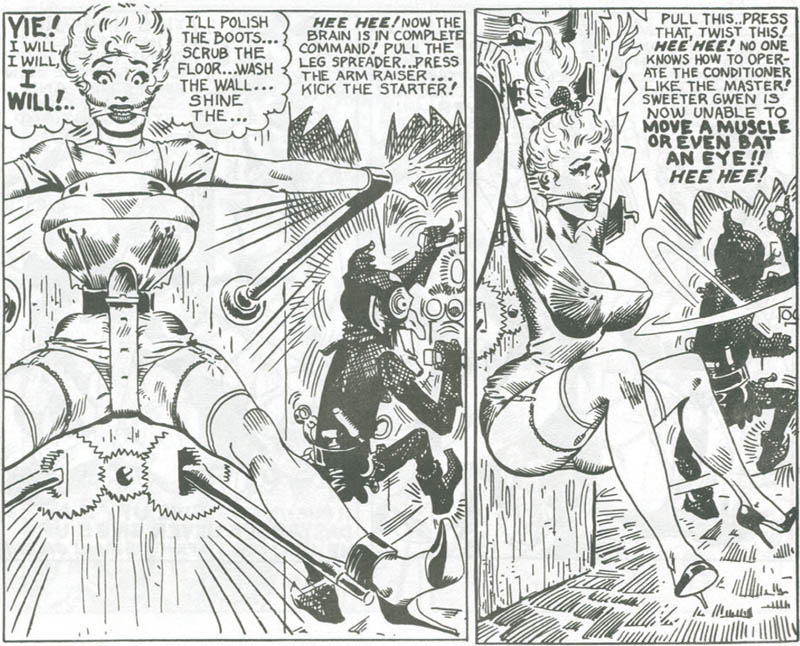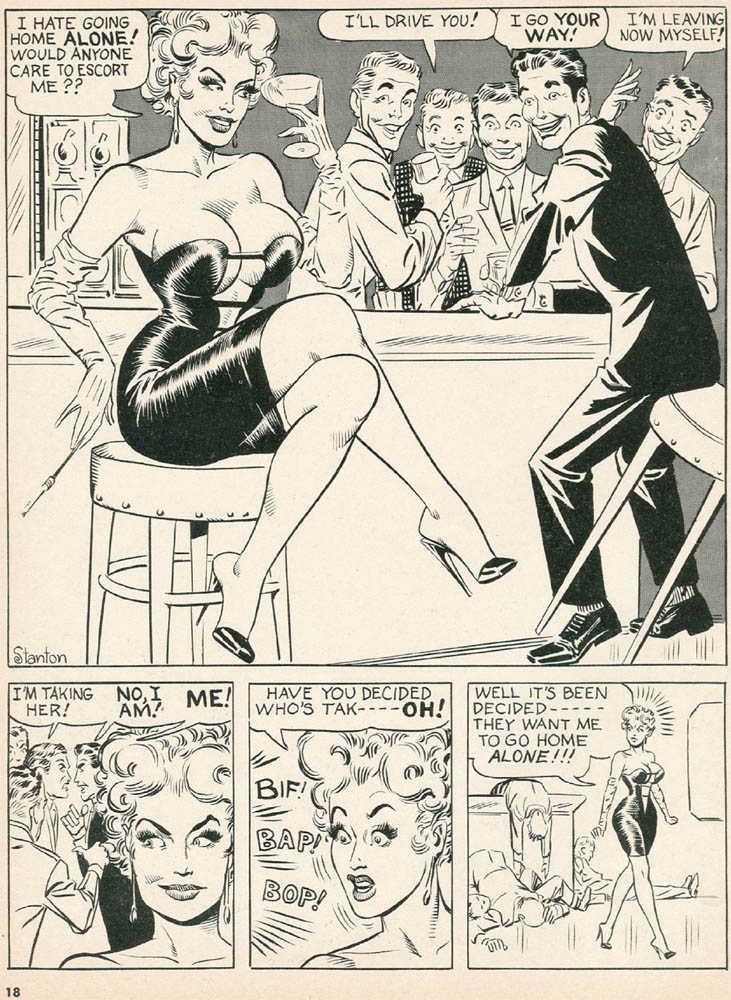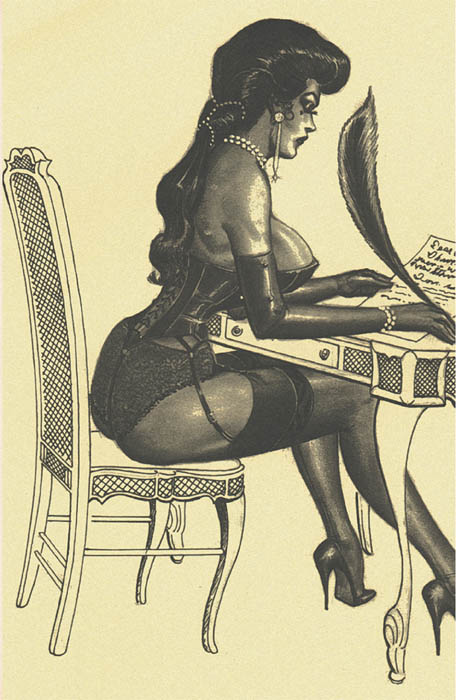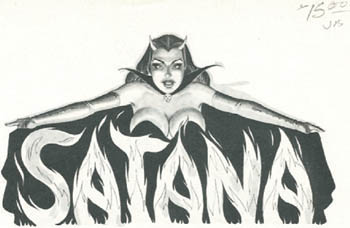
Ernest Stanten was the son of Russian emigrants, born on September 30, 1926. He studied art at the School of Visual Arts in New York City, where he changed his name to the snappier Eric Stanton. As a brash 19-year-old, Stanton soon found a job at Irving Klaw’s Movie Star News, boasting that he could draw better than any of the other artists working for Klaw. He was instantly hired and drew many strips as “work for hire,” not owning the stories he created.
He later studied at the Cartoonists and Illustrators School, under Batman inker Jerry Robinson, where he met fellow classmate Steve Ditko. The two friends set up a Manhattan studio at 43rd Street and Eighth Avenue in 1958. Both artists obviously influenced each other, and some of Stanton’s work during this time shows a heavy Ditko hand, although the artist denied ever touching Stanton’s art. However, Stanton clearly stated they would each dabble in each other’s art, mainly spot-inking.
Sadly, when Ditko achieved a certain respectability, co-creating Spider-Man and Doctor Strange with Stan Lee for Marvel Comics, he distanced himself from his former studio partner. Possibly the Marvel artist was embarrassed by the lascivious line drawings Stanton was creating and feared he would be “tarnished” as a fetish artist himself.
At the same time, Stanton worked on Lenny Burtman’s Exotique magazine, using pseudonyms like “Savage” and “John Bee.” In the early 1960s, the majority of Stanton’s earnings were coming from wealthy clients who paid for commissions.
After Irving Klaw died in 1966, Stanton started self-publishing his mimeographed (and later photocopied) Stantoons titles, and produced well over 100 issues, right up to his death in 1999. Stanton supported his work by distributing to the quasi-underground network of subscribers and patrons.
Publisher J.B. Rund was friends with Stanton from 1972 until his death: “I saw him at work hundreds of times. Generally, what he drew was for the money. Period. He had a sort of ‘patron’ who paid him well for the work he did and provided other financial support.”
After John Willie’s death, Eric Stanton continued his peer’s strip Sweeter Gwen (doline). However, Stanton took Willie’s original character and exaggerated the humor and main protagonists until they became mere caricatures.
Stanton’s trademark skintight tops, pencil skirts, and killer high heels are all present in this cartoon from Satana magazine.
The Stantoons series continued, featuring many of his best-loved characters, including the sexy Wonder Woman parody Blunder Broad and the Princkazons. Although the majority of his work depicted dominant females (FemDoms), he also produced work depicting all forms of bi, gay, and transgender motifs. A recurrent theme was strong women fighting and wrestling, either with each other or with (usually weaker) men—a favorite fetish of the artist.
“Eric was a very nice man, easygoing, generous, and, in my case, supportive,” recalled J.B. Rund. He was also incredibly prolific, as were many of the fetish artists, and drew fantastic strips like Tops and Bottoms, Bound Beauty, Lady in Charge, and Confidential TV. As Rund noted, “Stanton improved slowly and steadily and then was able to maintain a high level of quality for a long time.” Proving himself a master of the bondage and fetish strips, Stanton created an impressive number of stories, such as The Nightmares of Diana, Marie’s Extraordinary Adventure, and Phyllis in Danger. While his art style varied slightly over the years, it was always distinctive and instantly recognizable, with a unique pen and brush stroke and strong, muscular women in flimsy, torn clothing and sturdy underwear.

A classic Stanton comic strip from Satana #1, 1962, shows a Steve Ditko influence in the mens’ faces.

This statuesque dominatrix is an illustration from a men’s magazine.

Eric Stanton’s original logo design for the short-lived ’60s magazine, Satana.